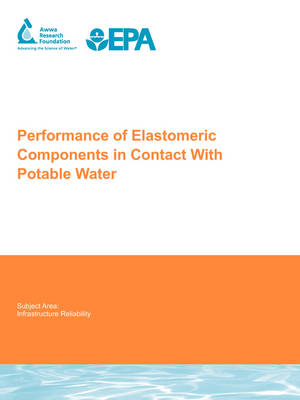For more than 50 years, elastomeric materials have been widely used for components in drinking water distribution systems. Their use has ranged from rubber gaskets, to valves, hydrants, and fittings, and they have proven to be equally adaptable to a wide variety of piping materials, including cast iron, ductile iron, steel, copper, and PVC. In general, elastomers have performed well in the water distribution system; however, with the switch from chlorine to chloramines, an increase of elastomer failures has been noted. Reported problems associated with elastomer failure include increased leaks and line losses, increased maintenance and repair, budget planning difficulties, and customer dissatisfaction.
This research initiative was intended to clarify the factors that contribute to elastomer degradation and provide a quantitative method for predicting the performance and life expectancy of in-service elastomer components. Specifically, the primary objectives of this project were to (1) establish a quantitative method for predicting the life expectancy of in-service elastomer components when exposed to potable water, (2) identify elastomeric materials with high performance when subjected to chloramines, and (3) provide the water industry better tools for managing the risks and financial costs associated with elastomer failure.
The research was accomplished through the completion of four specific tasks. First, the appropriateness of existing elastomer guidelines, standards, and policies from the water industry and related fields were assessed. Second, accelerated-aging tests were conducted on representative un-aged elastomer formulations to define their service degradation curves. During this testing period, the degradation influence of chlorine, pH, and strain were also assessed. Third, field samples were matched to the degradation curves to predict degradation factors and remaining service life. Fourth, accelerated-aging tests were performed on the field samples to verify that their ongoing performance would be consistent with the established degradation curves.
- ISBN10 1843398125
- ISBN13 9781843398127
- Publish Date 14 June 2008
- Publish Status Out of Print
- Out of Print 2 March 2017
- Publish Country GB
- Imprint IWA Publishing
- Format Paperback
- Pages 332
- Language English
